 |
Affordable Care Act (ACA) Basics for Business Owners (Corrections) |
0.34 |
This course covers how the Affordable Care Act (ACA) affects small business owners in terms of what standards and regulations they need to know.
This course will also cover reporting requirements for business owners and the responsibilities of the employer mandate. |
 |
African Penguins |
1.00 |
This course presents historical and current threats to this endangered species, along with what is being done to help save them. Dive into their wet and wild world and discover details of how these birds behave. |
 |
After School Improvement Series: Emergency Action Plans |
0.50 |
Like all other early childhood and school-age settings, after school programs need to consider how they prepare for and respond to emergency situations, from natural disasters, like storms, earthquakes, tornados, flash floods, or volcanic eruptions; fires; power outages; missing children; or acts of violence, including active shooter situations. Some emergency situations may require evacuation, while others may initiate a lock down, or shelter-in-place. The best way to prepare for emergency situations is to plan for them. We can do this by considering the kinds of emergency situations we might encounter, and then developing a series of procedures and protocols for responding to them. Your program’s Emergency Action Plan sets out your role and responsibilities should any of these emergencies occur.
|
 |
After School Improvement Series: Indoor Environments |
0.50 |
This webinar will discuss the role a well-planned indoor environment plays in supporting the developmental needs of school-age children. It will talk about the use of interest areas as tools for creating an indoor environment that supports children’s interests and developmental needs. In addition, we’ll learn how to plan indoor environments that are warm and inviting, help children feel welcome and comfortable and will allow them to participate in different activity areas at the same time without disturbing one another. And finally, we’ll discuss the role a well-planned indoor environment plays in keeping children safe and engaged. |
 |
After School Improvement Series: Outdoor Environments |
0.50 |
The After School Improvement Series: Outdoor Environments course will:
Describe different types of outdoor environments, along with the opportunities and challenges each one offers.
Discuss the role outdoor environments play in encouraging children to be active, while promoting a range of different experiences.
Identify the steps you can take to ensure that the outdoor environment is safe and accessible for all children.
Explore how outdoor environments can be used to extend learning opportunities found in indoor environments.
|
 |
AI in Education: Crafting Effective Policies for Educators and Administrators |
1.00 |
This course covers crafting effective artificial intelligence policies for educators and administrators. It is just one out of many K-12 educator courses we offer. This course will help you develop new knowledge about the benefits of utilizing artificial intelligence while upholding the principles of ethics, equity, and data privacy. Educators and administrators will be able to navigate the fundamentals of artificial intelligence and create robust policies that ensure responsible and inclusive artificial intelligence adoption, ultimately enhancing student learning outcomes. |
 |
ALS Airway Response - Part One |
1.00 |
This conversation with Dr. Christopher Galton turns into a lesson that any paramedic (no matter what their background) will find beneficial in their attempt(s) to improve their Airway Skills. Dr. Galton, leads this discussion by bringing together his experiences in the pre-hospital arena, the emergency department, the ICU, the operating room, and beyond. Pull out a pen and paper and get ready to write down talking points that you will undoubtedly debate with fellow paramedics. You have two attempts to gain a 70% or higher on the exam. Take your time and good luck! |
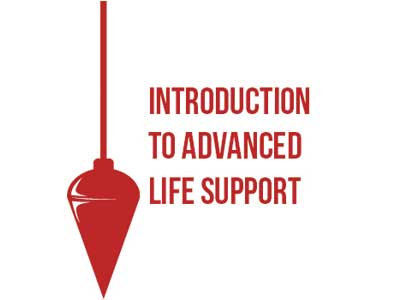 |
ALS Airway Response - Part Three |
0.75 |
This final session offers some thoughts on what should be accomplished when attempting to intubate the sickest of patients. This is a brief overview that allows the new ALS provider a chance see what should be learned. Think of this as an opportunity to learn how to assist RSI technicians with what they do.This is a very challenging exam, please take your time. You have two attempts to gain a 70% or higher. Good luck! |
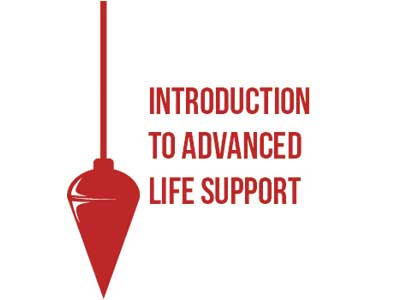 |
ALS Airway Response - Part Two |
1.00 |
In a twenty minute discussion, Dr. Galton shared some very valuable opinions that were formulated, in a large part, from his many years as a paramedic. Join us for an extension of this discussion. In this second part, Dr. Galton briefly discusses exhalation of CO2, Instrumenting an Airway, Management of Gastric Tubes, and more. You have two attempts to gain a 70% or higher on this exam. Take your time and good luck! |
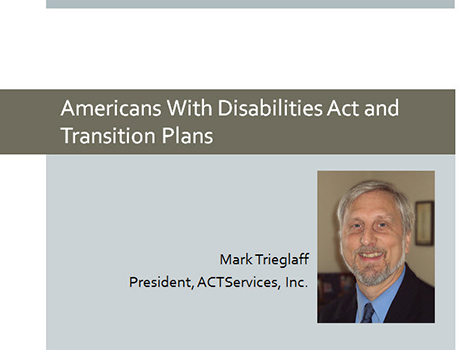 |
Americans With Disabilities Act and Transition Plans |
1.00 |
Do Title II and Title III of the Americans with Disabilities Act apply to you?
Do you work for a non-profit or for-profit zoo, aquarium, or museum? Is your zoo, aquarium, or museum operated by your state or local government? Do you have a Transition Plan or Barrier Removal Plan for your organization? Do you know that the Justice Department or your State's Attorney's Office could sue your organization if you are not in compliance? Fines can cost an organization $55,000 plus compensation just for an initial infraction.
This comprehensive webinar will discuss the development of a plan, examples of that plan, common accessibility issues, and an overview of what to look for in your policies and procedures that could cause an accessibility issue. |
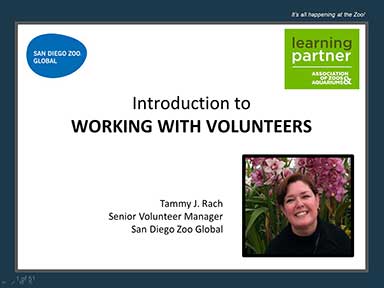 |
An Introduction to Working with Volunteers |
1.00 |
1/12/23 jg unchecked forward seek and shut off CEUs - Volunteers are an integral part of our organizations and their engagement is critical to our success. So what does it take to successfully work with volunteers? This webinar, hosted by Tammy Rach, Senior Volunteer Manager for San Diego Zoo Global, will take you through: who volunteers are, what they want, and how to best engage them in the ultimate mission fulfillment. Participants will also receive a copy of this presentation to share with staff so they can start building their own Volunteer Tool Kit. |
 |
Anger Management |
1.00 |
Anger is a set of physical responses, emotions, and behaviors triggered by a perceived threat or frustration. Anger can be harmful or helpful, depending on how you cope with your anger and the anger of others. This course will explore how to understand your anger better and manage your anger responses. You'll also examine the causes of anger and ways to use it constructively. |
 |
Animal Behavior 1: Why Study Animal Behavior? |
1.00 |
Animal behavior is a topic that has fascinated people for centuries. The first course in the series will give an overview of behavior and highlight the many reasons to study animal behavior, the history of behavioral research, and the many different fields that study animal behavior. |
 |
Animal Behavior 2: Application of Animal Behavior Research in Zoos and Aquariums |
1.00 |
Modern accredited zoos and aquariums strive to use behavioral data to make many management decisions about the animals under their professional care. This course will provide an overview of many different uses of animal behavior in a zoological setting, including the ability to examine indicators of animal welfare. |
 |
Animal Behavior 3: Experimenter, Observer, and Sampling Bias |
1.00 |
This course will give an overview of different types of bias that can impact a study on animal behavior. Information contained in this course will help ensure observers are aware of how experimenter, observer, and sampling bias can impact data collection and analysis, and of precautions to consider and take before starting a study. |
 |
Animal Behavior 4: Reliability and Validity |
1.00 |
This course will help ensure that the data you collect in animal behavior research is repeatable, consistent, and actually measures the features of a target behavior. This is called reliability and validity. |
 |
Animal Nutrition |
2.00 |
This interactive course presents a dietary case study and then teaches you the basics needed to manage similar nutritional challenges. After completing the course, you will be able to name basic nutrients, understand feeding ecologies, explain differences in species’ digestive tracts, identify standard animal feeds, and understand how body condition is measured. In addition to having a better grasp of the science behind nutrition, you will learn about the storage and preparation of diets, safe food handling techniques, and how to ensure food is safe for animals. |
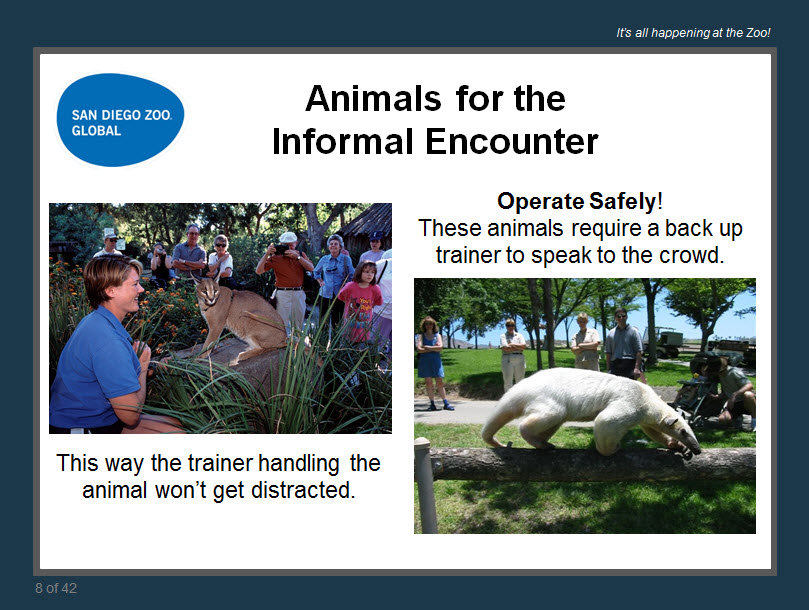 |
Animal Show Development |
1.00 |
This program will provide information about how best to present animals to your guests. We will discuss different types of programs including informal animal encounters, a free flight bird show, a cheetah run program and a mixed species show, including sea lions. For each type of program, we will discuss staffing, collection planning and production, such as sound and props. We will also talk about scripting in general and especially responsible messaging. |
 |
Animal Welfare - General Audience - Short Course |
0.33 |
The public’s interest in animal welfare is increasing. This short course is designed for all non-animal care staff and features the same but condensed content as presented in the original Animal Welfare Professional version. This short version aims to educate non-animal care staff about animal welfare, how it is measured on a continuum from good to poor and about our efforts to ensure our animals are thriving. Staff who interact with our guests, are ideally positioned to share this important information with our guests. This fast-paced, 20-minute course is designed to equip our employees with key information on the subject of animal welfare. |
 |
Animal Welfare Course General |
1.00 |
|
 |
Animal Welfare Professional |
2.00 |
This course will increase your understand of animal welfare, as well as best practices to help ensure high levels of welfare for the animals within your professional care. Upon completion of the course, you will be able to: define animal welfare and describe the animal welfare continuum, name at least three laws/acts pertaining to animal welfare and how they contributed to improving the welfare of animals, define stress, identify the difference between acute and chronic stress and their relationship to animal welfare, identify why it is important to focus on both positive and negative indicators of animal welfare, identify the differences between inputs and outputs for animal welfare, identify three potential positive indicators of animal welfare, identify three potential negative indicators of animal welfare, compare/contrast the Five Freedoms and the Five Opportunities to Thrive, Identify three three best practices to help ensure high levels of welfare, identify three benefits of ensuring high levels of welfare, be able to differentiate between subjective, opinion-based animal welfare concerns and objective, evidence-based animal welfare concerns, define animal rights, and identify the difference between animal welfare and animal rights. |
 |
Animal Welfare Spanish |
1.00 |
|
 |
Anti-Discrimination Law: A Primer for Small Businesses |
0.75 |
There are multiple federal laws regarding discrimination in the workplace.
Beginning with the Civil Rights Act of 1964, the U.S. Congress has passed a number of laws to address various forms of discrimination. The Fair Housing Act of 1968, for example, prohibited discrimination concerning the sale, rental, and financing of housing based on race, religion, national origin, sex, (and as amended) handicap (later called disability), and family status. In 1990, the Americans With Disabilities Act (ADA) was passed to protect the rights of individuals who are differently enabled, physically or mentally. Other laws, or amendments made to existing laws, provided further protections for people with disabilities, workers over the age of 40, and LGBTQ+ individuals, among others.
The purpose of this course, however, is not to give a history lesson on U.S. anti-discrimination law but to focus on how those laws apply today to small businesses, their employees, and their customers. |
 |
Art and Sensory Experiences that Foster Creativity (CDA 2) |
2.00 |
This session equips you with the knowledge and tools to differentiate art projects from crafts in your early childhood setting. Learn how to cultivate the "doing" over the "having," crafting captivating experiences that engage multiple senses. Discover expert strategies for sparking imagination, nurturing creativity, and providing your young learners with endless opportunities for artistic expression. |
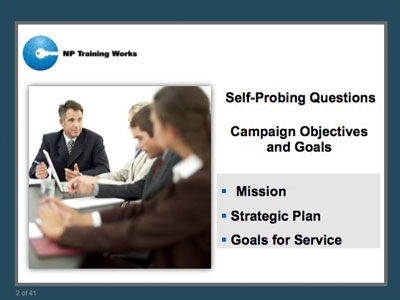 |
Art of the Capital Campaign |
1.00 |
As you learn how to plan, operate and conduct a capital campaign you can find a lot of advice on the science of fundraising. Often, however, your success will depend more on the Art of the Practitioner (you) than the rules of the game. This Webinar is designed to help you become a capital campaign artist by giving you a roadmap to travel from pre-campaign, feasibility, planning, infrastructure, phases and post-campaign wrap-up. You’ll learn the pitfalls to avoid and important tasks to accomplish to become a capital campaign impresario. You’ll learn the tools to help you enjoy the ride. |


























